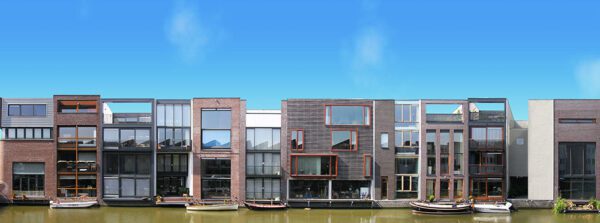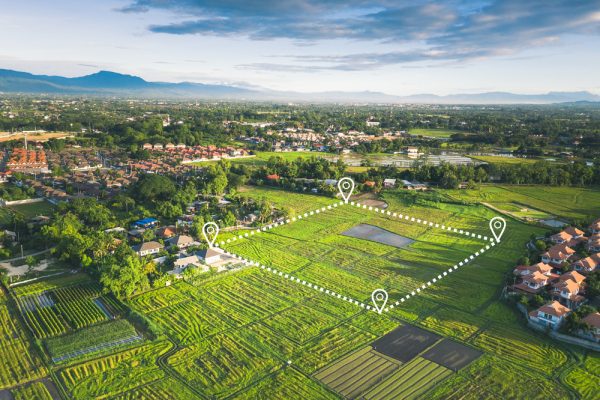
7 December 2020
When should a deed of division be amended?
Permission must usually be requested from the meeting of the VvE (Homeowners’ Association) for the construction of a roof terrace or the construction of an extension.
This follows from Article 22 paragraph 1 of the Model Regulations 2006, which state that any extension, substructure or additional extension is prohibited without prior permission. In addition, Article 23 paragraph 1 of the Model Regulations 2006 states that an owner / user may not make any changes that alter the architectural appearance or construction of the building without the permission of the VVE meeting. Other Model Regulations have similar provisions.
Do you require an amendment to the deed of division?
However, obtaining consent from the VVE meeting is, in many cases, insufficient. Often the deed of division must also be amended. If this is not done when required, the meeting decision is invalid and the realisation of the roof terrace or the extension is unlawful. An owner (or their legal successor) who objects to the situation can then demand rectification of the unlawful situation. This may result in the roof terrace or extension having to be demolished. This right of action only expires after 20 years. This highlights the importance of carefully checking whether an amendment to the deed of division is required.
An amendment to the deed of division is required if changes occur in the property law situation (the scope of the apartment right) or the agreed rules of the game (such as the share in community / debt burden or the voting ratio). However, this is not always the case if the change made is not permanent. This is stipulated in the so-called “notary Wortelboer judgment” (ECLI: NL: HR: 2000: AA5405).
Construction of a roof terrace and deed of division
An example of this is the construction of a roof terrace. In most deeds of division, the roof is referred to as communal property. If the owner of the top apartment of the building builds a roof terrace, they include a communal part of the property in the private part of their apartment right. The size of the private section is thus changed and the actual situation no longer corresponds with the description in the deed of division and the division drawing. In this situation it is therefore important that the deed of division is amended. The roof terrace is then permanently included in the division and can also be transferred when the apartment is sold. A recent example of this occurred at the Overijsel District Court (ECLI: NL: RBOVE: 2020: 3613).
However, amendment of the deed of division is not necessary if permission for the roof terrace is only granted to the current owner, and is therefore not intended for their legal successors. There are conditions attached to this. The roof terrace must be laid out in such a way that it can be removed without appreciable costs and the decision of the meeting must state the intention of its temporary nature. In addition, the decision must be reasonably revocable. This was the case, for example, in a case that took place at the Arnhem-Leeuwarden Court (ECLI: NL: GHARL: 2014: 4798).
Fraction for the share in the community, debt burden or voting ratio
An extension usually has a permanent character, but the deed of division does not need to be amended in all cases. In the event that the extension takes place on an area that already belongs to the private part of the apartment right, nothing will change in the property law situation, and from that aspect an amendment to the deed of division is therefore not required. However, the extension may mean that the fractional part for the share in the community, debt burden or voting ratio would have to be changed. This requires an amendment to the deed of division. However, in a case brought before it, the Court of The Hague ruled that it had not been established how the fractured parts were created at the time of the division, with the result that the extension also gave no reason to adjust the fractured parts in the deed of division (ECLI: NL: GHSGR: 2005: AT7523).
Advice on changing a deed of division?
Are you dealing with changes within your VvE that may require an amendment to the deed of division? Please feel free to contact me for further advice.
31 January 2024
Robot lawyer
A ‘robot lawyer’ has been made available on the market in America. This is an app with legal information that would make using a lawyer unnecessary. ‘Fight corporations’, ‘find hidden money’, ‘beat bureaucracy’. This is what the robot can and will do. ‘Sue everybody,’ is the urgent advice.
Read more
24 January 2024
Contracting work
A building contract exists when one party, the contractor, undertakes to the other party, the client, to deliver work for payment of a sum of money.
Read more
6 December 2023
Didam judgment: contracts void or voidable?
In the context of administrative law, the Division has previously ruled that public bodies are required by the principle of equal opportunity or equality to provide interested parties with scope to compete in the event of scarcity.
Read more
